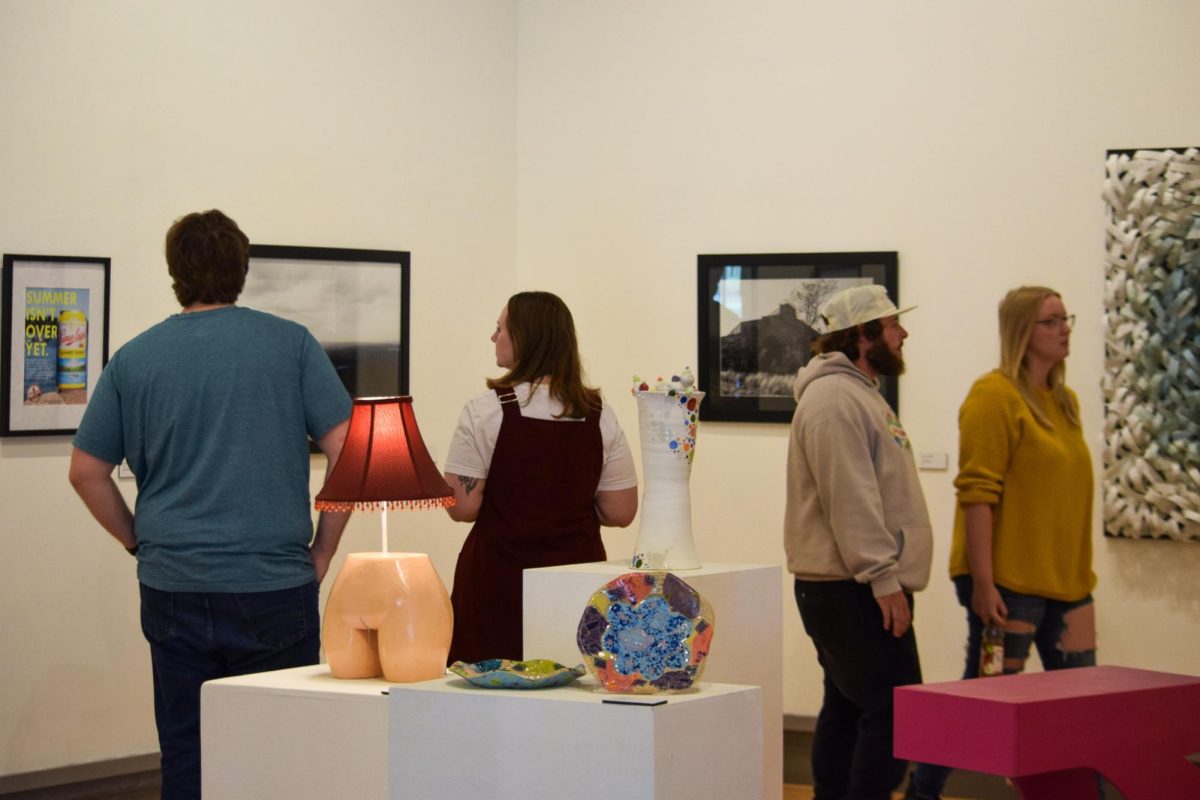Now coming to a close, the 55th Annual Juried Art Show gave USI students a major opportunity to show off their creativity. The Kenneth P. McCutchan Art Center has featured art made from different mediums and various techniques, allowing students to freely express themselves through art.
As for my visit to the gallery, seeing such a range of art compelled me and inspired me. From the many pieces displayed, there were a few in particular that caught my attention at first sight.
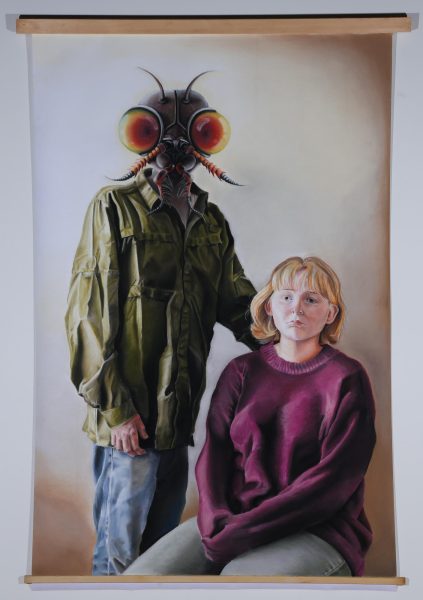
“Parasitic Relationship” by Madison Jung, senior studio art major, is a large-scale portrait of a “parasite” standing beside a sitting woman.
The muted colors and blank background highlight the two subjects, creating a dull tone that complements the woman’s unhappy, defeated appearance. On the other hand, the parasite stands tall, with bright eyes and a controlling hand on the woman’s back. This portrait shows a parasitic relationship where the man “parasite” feeds off the woman’s misery to better himself.
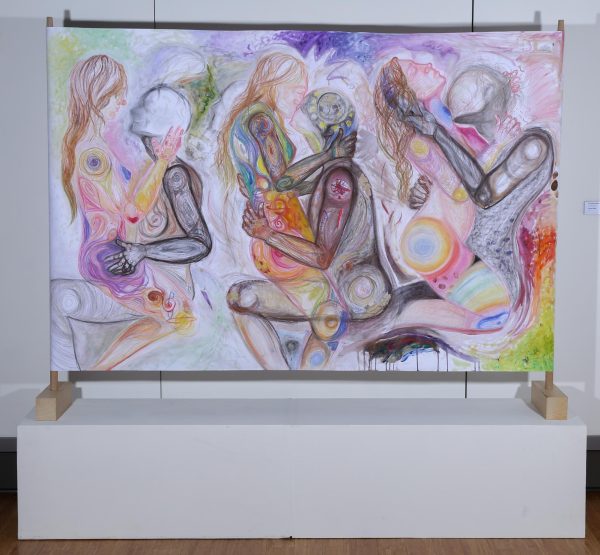
The artwork evokes feelings of worry and sympathy for the woman, driving viewers to look deeper. This was the first piece that caught my attention, and I enjoyed looking at this one.
“A Thousand Faces; Never a Single Name” by Jennah Hottel, senior studio art major, uses mixed media such as watercolor, colored pencils and paint. This piece uses multiple bright colors with long, waving strokes to create two intimate people.
My first thought when looking at this piece was “soul-ties” in a spiritual sense, meaning two individuals who create a spiritual bond through intimacy. The vibrant colors used here supposedly represent each person’s soul.
But why is only one of them full of color? The meaning of this piece is harder to decipher, but nonetheless, I like the color scheme and pattern used here.
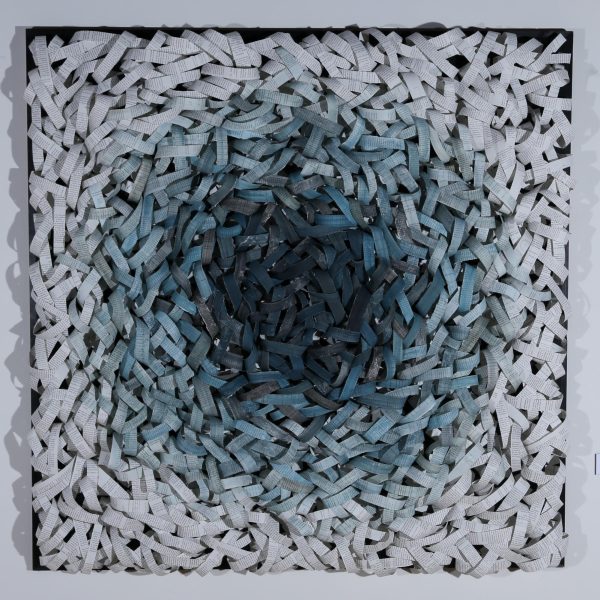
“Drowning” by Sara Griffin, senior studio art major, is a commentary on the college experience. She uses cut-up textbooks, wood and paint to make the viewer feel as if they are drowning under the pressure to be better.
The paint starts out with a pure white on the outside, then as you move deeper into the middle, it becomes a darker blue. When you first get to college, everyone has their freedom; everything is bright white. As you continue in college, and you spiral because of work and exams that you need to put effort into, everything isn’t as bright anymore.
The cool, dark colors used here evoke the sadness and dread that comes from experiencing the high expectations of college first-hand. This art expresses a truth about college because it represents the challenges of dedication and ambition to our futures.
“Static” by Katie Holloway, senior studio art major, illustrates a man in a trance, blinded by static televisions in front of him. This piece features only charcoal as its medium, creating a dramatic feel and stark contrasts.
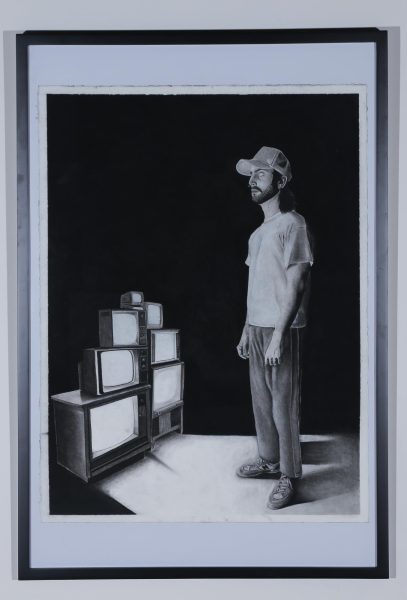
This man doesn’t have emotion and seems hypnotized, showing that television itself can hypnotize people. The black background contrasting the bright, static televisions demonstrates the man’s sole focus on the television, providing a visual of what it’s like to continuously watch television in an unhealthy way. Too much television is harmful not only to the eyes but also the brain.
This piece feels frozen and still-like, almost as if you can’t look away — just like the man in the drawing. I like this piece because it gives a good message about excessively watching television.
“Detachment” by Deanna Hardy, junior photography major, is a photograph group of people, but the focus is only on one person. The focus is a woman whose facial expression is full of melancholy and depression. If you were to put yourself in this woman’s shoes, you could say she feels out of place with these other people, or that she feels lonely.
In the first piece, it’s her birthday, and while the people around her are there to celebrate this day,the woman isn’t. In the second she’s at a funeral, and like the first picture, she’s numb. I think this shows a representation of depression. People with depression have always expressed that they feel a sort of “numbness” and “isolation.”
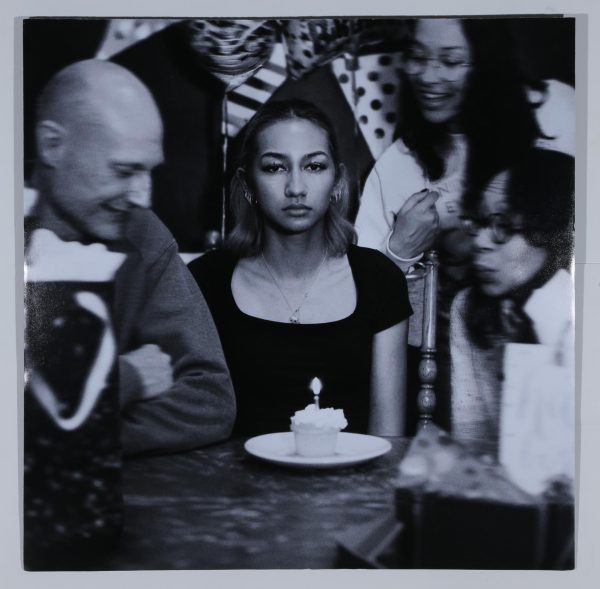
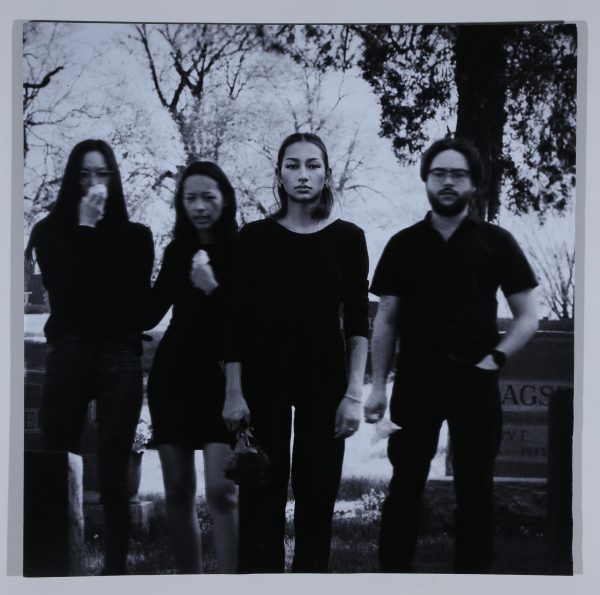
The coloring of this piece also helps this case: instead of being in color, these photographs are black and white. Color has been proven to bring up people’s moods, while no color–black and white — does not.
For those interested in seeing more of the exhibition and are unable to make it to the gallery before the exhibition closes Friday, Charles Armstrong’s Publication Design 468 class has created a catalog from the exhibit, featuring each student’s artwork, details of awards, juror information and acknowledgments to celebrate these students.
Copies of this catalog are available for purchase through the website Blurb. Each catalog will be estimated around $20 each and roughly 80 pages.


